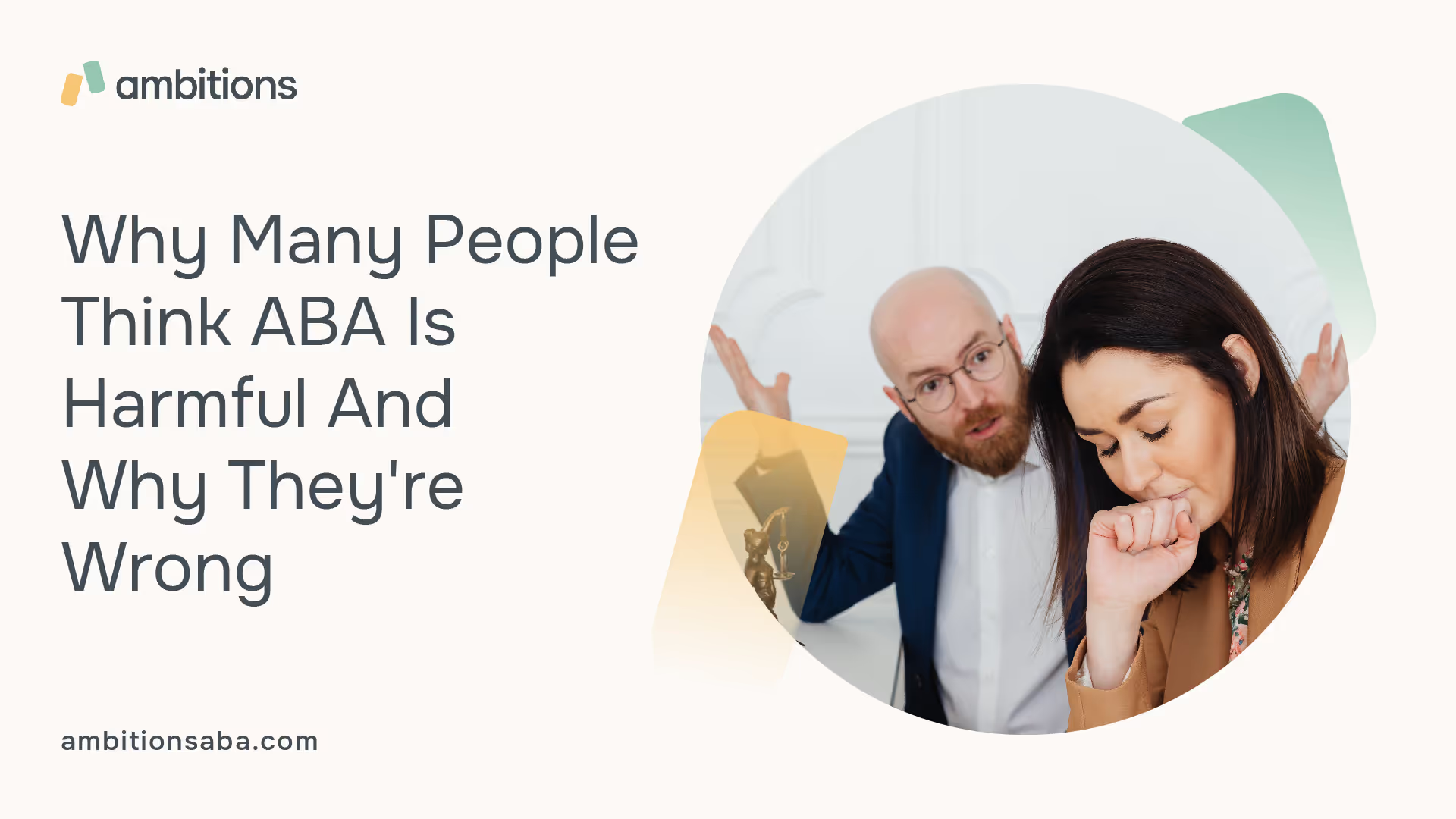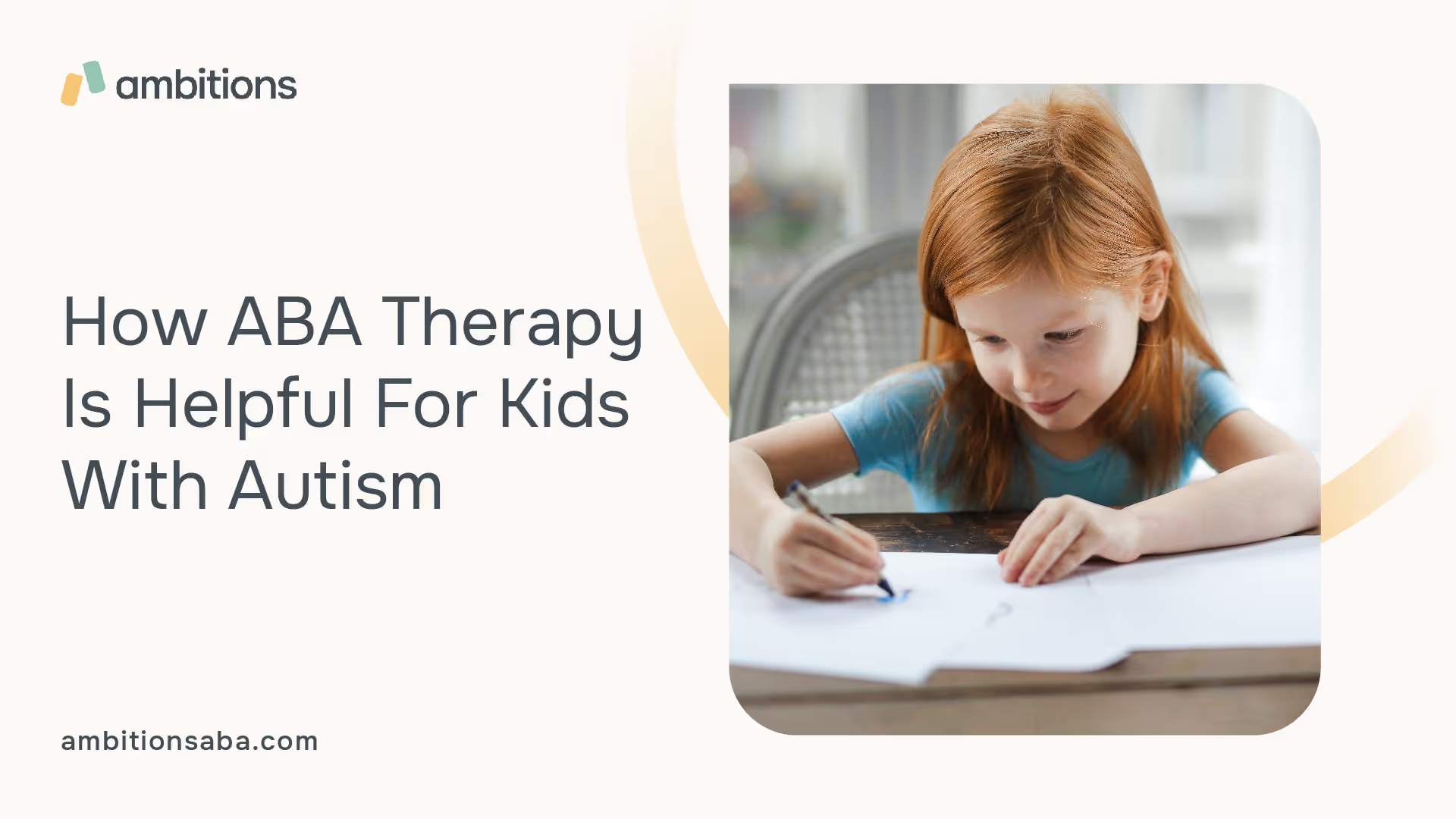Despite controversy around ABA in recent years, research has proven it's a beneficial and helpful therapy.
Applied Behavior Analysis (ABA) therapy is a widely used treatment for children with autism spectrum disorder (ASD). It is a form of therapy that aims to teach children with ASD social, communication, and behavioral skills.
ABA therapy is a form of therapy that uses positive reinforcement to teach children with ASD new skills. It typically involves breaking down complex skills into smaller, more manageable steps and rewarding the child for completing each step.
For example, if a child is learning to tie their shoes, the therapist might start by rewarding the child for picking up the laces, then for making a loop, and so on. Over time, the child learns to tie their shoes independently.
ABA therapy is based on the principles of behaviorism, which holds that behavior is shaped by the environment. By changing the environment and providing positive reinforcement for desirable behaviors, ABA therapists aim to teach children with ASD new skills and reduce problem behaviors.
The Controversy Surrounding ABA Therapy

Despite its widespread use, ABA therapy has been the subject of controversy in recent years. Some critics argue that ABA therapy is harmful to children with ASD, citing concerns such as:
- ABA therapy is too focused on compliance and obedience, rather than promoting independence and self-advocacy.
- ABA therapy can be aversive or punishing, using techniques such as withholding rewards or using physical prompts to elicit desired behaviors.
- ABA therapy can be traumatic or abusive, with some therapists using techniques such as forced eye contact or physical restraint.
Critics also argue that ABA therapy is based on a deficit model of autism, which views autism as a problem to be fixed rather than a neurodivergent identity to be celebrated.
They argue that ABA therapy can be harmful to children's self-esteem and mental health, reinforcing the idea that they are broken or defective.
Proponents of ABA therapy, on the other hand, argue that it is a safe and effective treatment for children with ASD. They cite research showing that ABA therapy can improve social, communication, and behavioral skills in children with ASD, and that it can lead to better outcomes in adulthood.
They also argue that ABA therapy can be tailored to the individual needs and preferences of each child, and that it can be delivered in a positive and supportive manner.
The Evidence For and Against ABA Therapy
So, what does the research say about ABA therapy? The evidence is mixed. Some studies have found that ABA therapy can be effective in improving social, communication, and behavioral skills in children with ASD. For example, a 2015 review of 16 studies found that ABA therapy was associated with improvements in communication, socialization, and adaptive behavior in children with ASD.
However, other studies have raised concerns about the potential harms of ABA therapy. For example, a 2019 study found that ABA therapy was associated with higher levels of stress and anxiety in children with ASD, compared to other forms of therapy.
Another study found that ABA therapy was associated with a higher risk of post-traumatic stress disorder (PTSD) symptoms in children with ASD.
It is worth noting that many of the studies on ABA therapy have methodological limitations, such as small sample sizes, lack of control groups, and short follow-up periods. This makes it difficult to draw firm conclusions about the effectiveness and safety of ABA therapy.
Why Many People Think ABA Is Harmful And Why They're Wrong

The controversy surrounding ABA therapy has led to many people viewing it as harmful and abusive. However, proponents of the therapy argue that this view is misguided and based on misinformation.
One common criticism of ABA therapy is that it is too focused on compliance and obedience, rather than promoting independence and self-advocacy.
While it's true that early forms of ABA therapy were more rigid and focused solely on behavior modification, modern forms of ABA therapy have evolved to address these concerns.
Today's ABA therapists work to promote independence and self-advocacy by teaching children with ASD how to make choices and express their preferences.
Another criticism of ABA therapy is that it can be aversive or punishing, using techniques such as withholding rewards or using physical prompts to elicit desired behaviors.
While some older forms of ABA therapy did use these techniques, modern forms of the therapy rely heavily on positive reinforcement. This means that instead of punishing undesirable behaviors, therapists reward desirable ones. For example, if a child wants a toy, the therapist might reward them for asking politely instead of throwing a tantrum.
Critics also argue that ABA therapy can be traumatic or abusive, with some therapists using techniques such as forced eye contact or physical restraint.
While there have been instances where these techniques were used inappropriately in the past, they are not standard practice in modern forms of ABA therapy.
In fact, most modern therapists avoid physical prompts altogether and use less intrusive methods such as modeling desired behaviors.
Overall, while there may be valid criticisms of older forms of ABA therapy, modern forms have evolved significantly to address these concerns. With proper training and careful implementation by qualified professionals, ABA therapy can be a safe and effective treatment for children with ASD.
How ABA Therapy Has Changed Over The Years and How It's Helpful
It is important to note that ABA therapy has evolved significantly over the years. In its early days, ABA therapy was criticized for being overly rigid and focused solely on behavior modification. However, modern forms of ABA therapy have addressed these criticisms by incorporating more child-led activities and focusing on building relationships with the child.
Today's ABA therapists work closely with families to create individualized treatment plans based on each child's unique needs and strengths.
These plans often involve a range of activities that are tailored to the child's interests, such as playing games or engaging in imaginative play.
One of the most significant changes in modern forms of ABA therapy is the emphasis on positive reinforcement. Instead of punishing undesirable behaviors, therapists reward desirable ones.
This approach has been shown to be more effective than punishment-based approaches, as it encourages children to engage in positive behaviors rather than simply avoiding negative ones.
Another key aspect of modern ABA therapy is the focus on promoting independence and self-advocacy. Therapists work with children to develop their communication skills and help them learn how to express their wants and needs effectively.
This helps children feel more confident and empowered, which can lead to better outcomes in adulthood.
Overall, while there may be valid criticisms of older forms of ABA therapy, modern forms have evolved significantly to address these concerns. With proper training and careful implementation by qualified professionals, ABA therapy can be a safe and effective treatment for children with ASD.
How ABA Therapy Is Helpful For Kids With Autism

ABA therapy has been shown to be helpful for children with autism in many ways. For example, it can help children learn important communication skills, such as making eye contact, using gestures, and expressing themselves verbally.
This is particularly important for children with autism who may struggle with social interaction and communication.
In addition to communication skills, ABA therapy can also help children develop important life skills, such as self-care and independent living skills.
By breaking down complex tasks into smaller steps and rewarding progress along the way, ABA therapy can help children learn how to take care of themselves and become more independent.
Furthermore, ABA therapy can be tailored to meet the unique needs of each child. This means that therapists can work with parents and caregivers to identify specific goals for each child and develop a treatment plan that addresses those goals.
For example, if a child is struggling with a particular behavior or skill, the therapist can focus on that area until the child shows improvement.
Overall, while there may be controversy surrounding ABA therapy, it is clear that it can be a helpful tool for children with autism.
With careful implementation by qualified professionals and proper training for parents and caregivers, ABA therapy can help children learn important skills that will improve their quality of life both now and in the future.
Conclusion
In conclusion, ABA therapy is a widely used treatment for children with ASD that aims to teach social, communication, and behavioral skills. However, it has been the subject of controversy in recent years, with some critics arguing that it can be harmful to children.
The evidence for and against ABA therapy is mixed, with some studies showing that it can be effective in improving skills in children with ASD, while others raise concerns about potential harms.
Ultimately, the decision to use ABA therapy should be based on a careful consideration of the individual needs and preferences of each child, as well as the available evidence.



